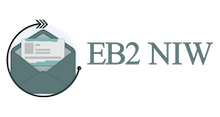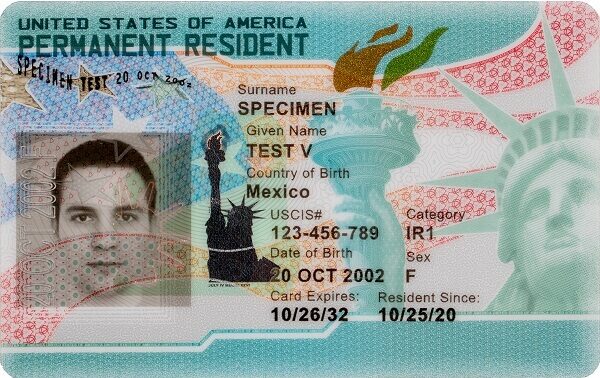Welcome to EBNIW blog, where we discuss all things NIW, this post is a short overview of my own journey navigating the NIW Journey.
After years of navigating the complex maze of immigration policies, I decided it was time to take control of my journey towards permanent residency in the United States. My path led me down the road of the EB-2 National Interest Waiver (NIW) – a challenging but rewarding route that eventually opened the doors to new opportunities and stability in my life.
Starting the Journey: Consulting with Lawyers
In December, my quest began with consultations with various immigration lawyers. Their fees ranged wildly from $4,000 to $18,000, and I quickly learned that lower fees often meant fitting into rigid, predefined templates that didn’t necessarily reflect my unique situation.
The key questions every lawyer asked were:
- Did I have a Master’s Degree (or PHD)?
- Did I have significant publications or citations?
- What was the specific area of my work?
Despite my solid educational background and professional experience, my lack of publications led to rejection by 80% of the lawyers I approached. This was a sobering realization but one that steered me towards either a lawyer who was willing to work with my specific credentials OR creating a DIY petition.
The requirements for EB2 NIW is however just that –
- You are person with either advance degree (MS degree and above) or Exceptional ability
- You meet the three prongs as described by the matter of Dhanasar, which includes –
- Your proposed endeavor has substantial merit and national importance.
- You are well-positioned to advance the proposed endeavor.
- On balance, it would be beneficial to the United States to waive the requirements of the PERM labor certification for you.
I definitely felt like I would fit the requirements reading these criteria. So, I began the work by collecting evidence to meet all the points above.
The Work Begins: Proposals and Recommendations
As you can see, the first prong says something about your proposed endeavor. Proposed endeavor is the work/task/project/business that you intend to do in the US medium-long term.
My first task was to articulate a proposed endeavor – a crucial first step of the NIW application. This endeavor needed to clearly demonstrate how my work was of national interest to the United States. This involved being specific at times and also providing an outsider view (spoiler alert, USCIS officers aren’t an expert in your field).
Gathering recommendations was another critical step. I reached out to colleagues, both current and past, some of whom I had not worked with directly. While I did face several rejections, I eventually secured five valuable recommendations. These letters, three from known associates and two from professionals I hadn’t worked with, highlighted different aspects of my contributions to cybersecurity.
Compiling Evidence: The Backbone of the Application
The evidence gathering process was exhaustive. It included:
- Awards and research grants from various organizations.
- Certifications from companies acknowledging my work.
- Certificates from competitions like Capture The Flag (CTF).
- Newspaper articles covering my work.
- Published works and vulnerability reports in my blog, which were cited elsewhere.
This evidence was meticulously compiled to address the three-prong test set by USCIS, which assesses whether the applicant’s endeavor is in the national interest, whether they are well-positioned to advance this endeavor, and if, on balance, it benefits the U.S. to waive the labor certification requirement.
Meeting the Three-Prong Test: A Strategic Approach
The core of my application revolved around the three-prong test set by USCIS. Here’s how I tackled each prong:
-
Substantial Merit and National Importance: I focused on demonstrating the national importance of my work in cybersecurity. By citing recent executive orders and the bipartisan infrastructure bill allocating significant funds for cybersecurity, I underscored the relevance and urgency of my field in protecting national interests.
-
Well-Positioned to Advance the Endeavor: My portfolio of achievements played a pivotal role here. I included my experience in various cybersecurity competitions, my blog posts that had caught media attention, and my contributions to the National Vulnerability Database. This collection showcased not just my skills and knowledge, but also my commitment and ongoing contributions to the field.
-
Beneficial to Waive the Labor Certification: The combination of the first two prongs helped me argue that waiving the labor certification would be in the best interest of the United States. I illustrated how my expertise and the unique contributions I could make were of greater value than the traditional labor certification process.
Detailed Timeline: From Submission to Approval
The timeline of my application process was as follows:
- March 6th: Submitted application.
- March 8th: Received case and notice.
- March 13th: Updated to show fingerprints were taken.
- March 24th: Case received.
- March 28th: I-797 approval notice received.
- May 10th: Case transferred to local Field Office.
- August 7th: New card production.
- August 8th: Case approved.
- August 10th: Card mailed.
- August 14th: Card delivered.
This timeline gives a realistic view of the processing times and stages involved in the EB-2 NIW journey. As you can see, this was really quick (compared to the regular EB2 PERM based) process.
If you are serious about starting a process and want to take a look at what a successful petition looks like, head over to download my petition page.


Leave A Comment